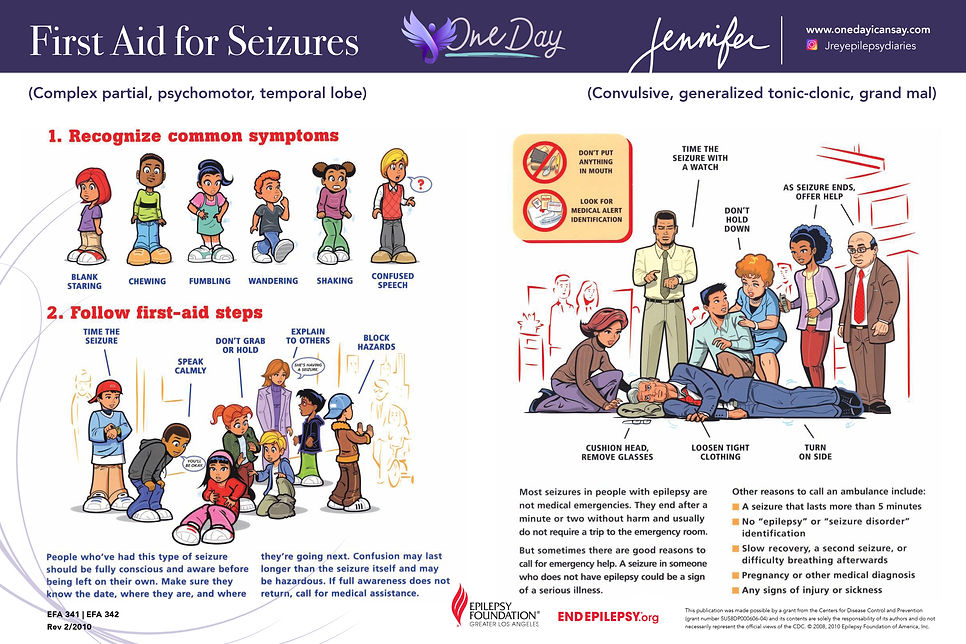
Basic Seizure First Aid
-
Stay calm and reassure others nearby.
-
Time the seizure with your watch.
-
Clear the surrounding area (remove hard or sharp objects).
-
Don’t hold the person or try to stop his/her movement
-
If consciousness is lost, put something flat and soft, like a folded jacket, under the head.
-
Turn him/her gently onto one side as this will help keep the airway clear.
-
Loosen ties or anything around the neck that may make breathing difficult.
-
Do not force the mouth open.
-
Don’t attempt artificial respiration except in the unlikely event that the person does not start breathing again after the seizure has stopped.
-
Stay until the seizure ends naturally.
-
Be friendly and reassuring as consciousness returns. Offer to call a taxi, friend, or relative to help the person get home if he/she seems confused or unable to do this alone.

TAKE A.C.T.I.O.N.
Quick Steps!
A
C
T
I
O
N
Assess the Situation: Is the person in danger? Remove nearby objects.
Cushion the head for protection.
Time: Check the time. If the seizure lasts longer than five minutes, call an ambulance.
Identity: Look for a medical bracelet or ID card. It may give you information about the person’s seizures and particular things to do.
Over: Turn the person on his/her side when possible. Stay and provide reassurance.
Never restrain the person, put something in his/her mouth, or try to give food or drink.
When to call an Ambulance
No Need To Call An Ambulance If:
-
Seizure ends in under 5 minutes
-
Consciousness returns without a further incident
-
No signs of injury, physical distress, or pregnancy
An Ambulance Should Be Called If:
-
No medical I.D. and no way of knowing whether the seizure is caused by epilepsy
-
Person is pregnant, injured, or diabetic
-
Seizure continues for more than 5 minutes
-
Seizure has happened in water
-
Second seizure starts shortly after the first has ended
-
Consciousness does not return after the shaking has stopped
* If the ambulance arrives after consciousness has returned, the person should be asked whether the seizure was associated with epilepsy and whether emergency room care is wanted.
